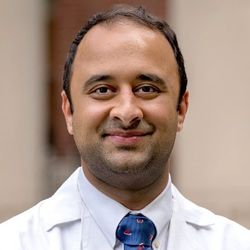
OR WAIT null SECS
Machine Learning Model Could Predict Outcomes Following Cardiac Arrest
A fourth-year medical student offers perspective on a study examining machine learning models being presented at CCC 49 in Orlando, FL as part of HCPLive's Notes from Rounds program.
A novel machine learning model could help predict mortality and neurological outcomes post-cardiac arrest, according to a new Johns Hopkins study.
Presented at the Society of Critical Care Medicine’s 49th Annual Critical Care Congress in Orlando, FL, study results indicate the new model demonstrated significantly improved prediction capabilities compared to the reference APACHE model.
“The objectives of our study were to first predict the neurological outcome and mortality at discharge using data only from the first 24 hours of ICU admission and the second objective was to determine whether utilizing physiologic time series (PTS) data, specifically just features from the bedside monitoring data, are useful in terms of model performance,” said lead investigator Hanbiehn Kim, MBE, of Johns Hopkins University, during his presentation.
Using the Philips eICU database, which includes over 200,000 patients from 208 hospitals, Kim and colleagues from Johns Hopkins Hospital extracted data on cardiac arrest patients who were mechanically ventilated. Of note, this database includes PTS data from patient bedside bio-monitors that recorded heart rate, oxygen saturation, blood pressure, and respiratory rate at 5-minute intervals.
To extract relevant data features and predict outcomes the researchers applied machine learning algorithms including logistic regression, neural network, XGBoost and Random Forest. During his presentation, Kim noted the ensemble model—a stacked model combining the four individual algorithms—performed significantly better compared to the reference logistic regression APACHE model for both neurological outcomes and mortality prediction. The primary outcomes of interest were neurological state or mortality at ICU discharge.
The model combining EHR and PTS features achieved enhanced neurological outcome prediction (AUC: 0.87±-0.01, sensitivity: 0.78, specificity: 0.88) as compared to the APACHE baseline standard model (AUC: 0.74±-0.01, sensitivity: 0.77, specificity: 0.63). The mortality prediction model (AUC: 0.81+/-0.01, sensitivity: 0.78, specificity: 0.71) also outperformed the APACHE model (AUC: 0.75+/-0.01, sensitivity 0.86, specificity 0.56). Including PTS with EHR data increased the mean AUC by 4% for neurological outcome and 2% for mortality.
Glasgow Coma Score parameters, initial temperature, serum lactate level and heart rate variability/stability contributed strongly to neurological outcome prediction. Similar features contributed to mortality prediction, however, laboratory values and demographic features provided a greater relative contribution, according to Kim.
“By using such a large database our analysis is very generalizable to a lot of different populations,” said Kim, who also claimed this was the first post-cardiac arrest prediction model to successfully incorporate PTS and EHR data. “We were able to create a model that was able to predict post-cardiac arrest outcomes within the first 24 hours of ICU admission.”
This study, “A Machine Learning-Based Prediction of Cardiac Arrest Outcome Using a Large Multicenter Database,” was presented at CCC 49 in Orlando, FL.
-----------------------------------------------------------------------------------------------------------------------------------------------
In an effort to diversify on-site coverage at meetings and conferences throughout the year, HCPLive® created Notes from Rounds—a program where we enlist the aid of aspiring medical students, fellows, and early career providers to document key takeaways from the sessions they attend. Those interested in contributing to coverage of a future meeting can contact us here.Adam Sturts, MSIV, a fourth-year medical student at Rowan University School of Osteopathic Medicine, volunteered to contribute to HCPLive's Notes from Rounds while attending CCC 49 in Orlando, FL. In addition to providing insights and coverage of the meeting, Sturts also presented a study he took part in with colleagues from Inspira Health Network in Vineland, NJ, titled "Predischarge decision tree analysis predicts 30-day congestive heart failure readmission," which examined the use of a predischarge decision tree analysis in nearly 5000 congestive heart failure admissions.


